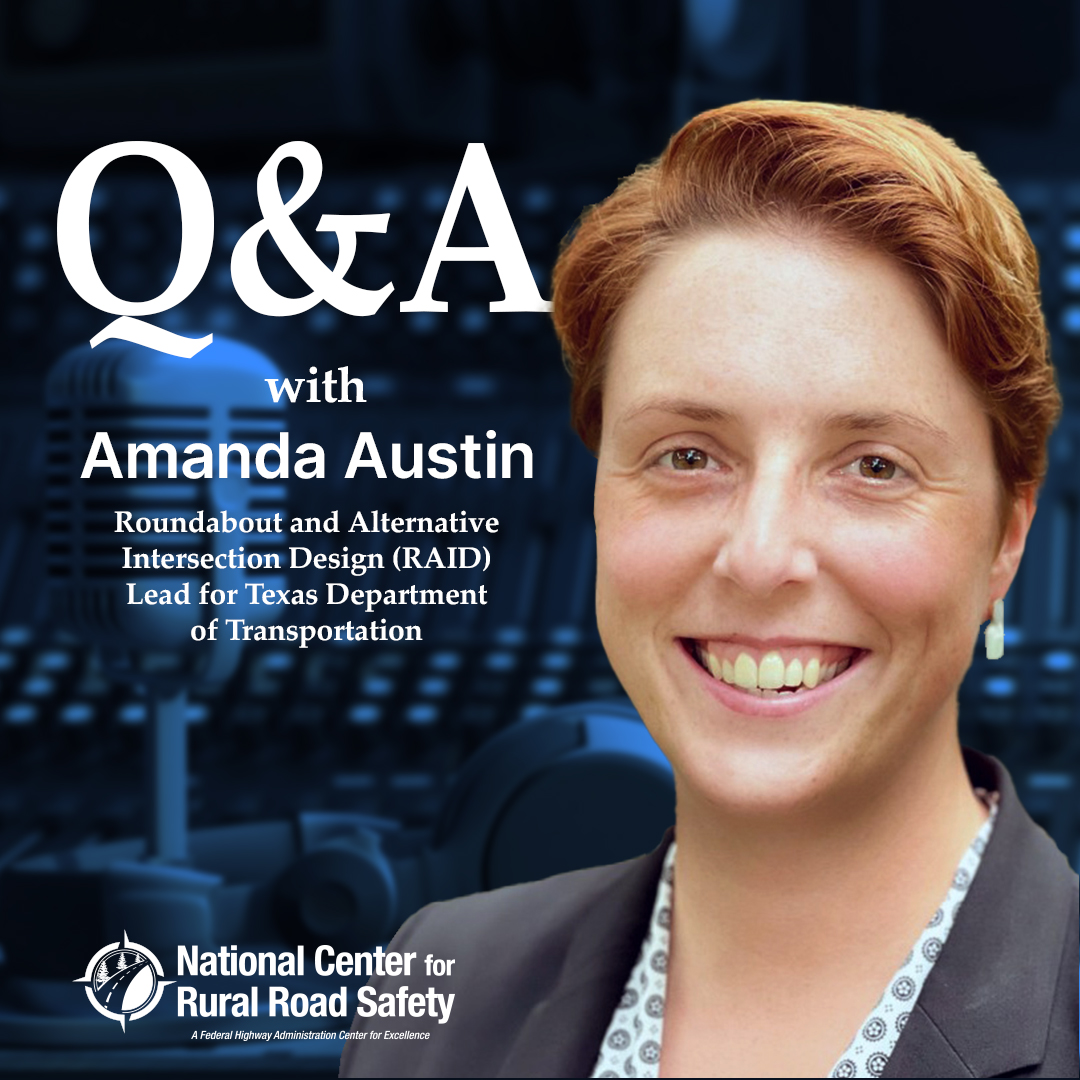Amanda Austin is the Roundabout and Alternative Intersection Design (RAID) Lead for Texas Department of Transportation (TxDOT). In this conversation, Kevin talks with Amanda about TxDOT’s roundabout initiative and why roundabouts are crucial to saving lives on rural roadways. We’ve identified and summarized five prominent questions and responses from the interview.
Listen to the full episode and access resources here: https://ruralsafetycenter.org/home-safely-podcast/#austin
Q&A
Q: Why did TxDOT decide to push for more roundabouts?
A: When I arrived, I saw we already had many roundabouts in Texas—but almost none under our state highway system. The prevailing mindset was “TxDOT doesn’t do roundabouts.” Having come from a state where roundabouts were more common, I began advocating internally. Leadership with exposure to roundabouts supported the idea, and we held a Roundabout Summit. That was followed by forming a Task Force and creating a formal program. We allocated resources, revised our design manual, and worked to shift the culture so districts would see roundabouts as a real option, not an anomaly.
Q: What makes roundabouts so beneficial compared to traditional intersections?
A: I believe roundabouts are safer and more forgiving. They eliminate many of the worst crash types—like head-on and T-bone collisions—by slowing speeds and reducing crossing conflict points. Because vehicles yield rather than stop, operations tend to be smoother; intersections are used more continuously rather than waiting on signal cycles. And when drivers make mistakes, lower speeds and simpler geometry help reduce the severity of crashes.
Q: How did we structure the Task Force and build collaboration across Texas’ districts?
A: We kicked things off with a statewide Roundabout Summit. From the summit, we asked volunteers and tapped contacts to staff a Task Force with representatives from many districts (urban, rural) + various divisions (design, maintenance, construction). We set clear expectations: hybrid meetings every other month, two hours each, for one year. Leadership made a visible commitment by joining often, and we made sure decisions and designs were informed by feedback from across the state. That way, what we proposed tended to be practical and acceptable everywhere.
Q: How do we design roundabouts so that large and unconventional vehicles (fire trucks, farm machinery, trailers, etc.) can still navigate them?
A: We use design elements like truck aprons—paved, gently curved areas just outside the regular travel lanes—that allow big vehicles to track through without interfering with regular traffic. We strive to size curves, approach geometry, and entry paths so that large vehicles can maneuver comfortably without making the roundabout overly big (which would reduce its safety benefits). It’s a careful balancing act: slowing vehicles for safety, while preserving adequate space for the heavy or oversized ones.
Q: What other strategies should be used to ensure roundabout success (education, tracking, buy-in, etc.)?
A: At TxDOT, we use a multi-front strategy:
- Communication & Outreach: We’re educating engineers, planners, local agencies, freight operators, EMS, fire, and the general public via presentations, social media, websites, and videos.
- Education & Training: Internally and externally, we’re offering training on design, operations, and best practices.
- Implementation Tools: We distribute design resources, update manuals, and help with funding partnerships to ease adoption for local agencies.
- Tracking & Evaluation: We monitor performance of installed roundabouts, collect feedback, and revise our designs based on what’s working and what isn’t.
- Leadership Engagement: I believe strongly in a “top down, inside out” approach—visible administrative support helps drive adoption from districts inward, then outward to the public.
